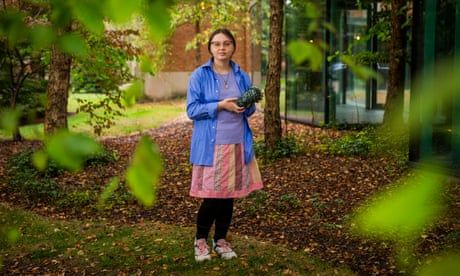
By writing a book about Korean myths, a writer learned that the old stories ran deep in her family
In my childhood homes, I grew up with Korean culture all around me. For years we had a woodblock print of a tiger (intended to ward off evil spirits) on top of our bookcase, a print of the 10 symbols of longevity and a shamanic dance mask of a syphilitic monk mounted on our wall, ancient Silla-style and celadon pottery on a bookshelf and carved wooden wedding ducks on a side table. All of these things were like background noise to me – they were just normal.
When I was an infant, my father would lift me up and chant the Korean phonemes, “Ga, na, da, ra…” to me to ensure I would be able to pronounce all the sounds of the language. As I grew, he would sing me Korean children’s songs and say rhymes. I still remember all the words to Mountain Rabbit and Forsythia. ‘‘Sythia, sythia, forsythia, pluck one, put it in your mouth.” Still, I used to have trouble pronouncing the plosive letters, of which there are no equivalent in English, and telling the difference between the short and long “o” sounds.
Continue reading...